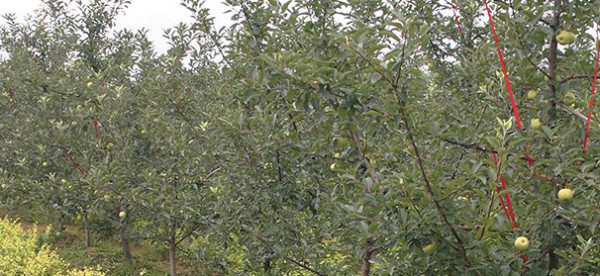

Aug 28, 2014Chinese fresh apples knocking at our door
Chinese fresh apples are another step closer to the U.S. market. On July 18, USDA’s Animal and Plant Health Inspection Service (APHIS) published a proposed rule in the Federal Register to allow their importation into the continental United States.
“The USDA notice was expected for some time and is the next step in a very lengthy technical review,” said Jim Bair, president of the U.S. Apple Association (USApple).
USApple and other industry groups long opposed U.S. importation of Chinese fresh apples, but that position has softened in the last couple of years. The U.S. industry is now open to Chinese exports – but only if U.S. growers get full varietal access to China. Diane Kurrle, USApple’s senior vice president, put it this way in December: “If Chinese apples are coming in here, we need to get U.S. apples going into China. Lots of U.S. apples.”
The Chinese market has been closed to U.S. apples since August 2012, when China sealed its borders against U.S. exports. Until then, Red Delicious and Golden Delicious had been the only fresh varieties from the United States allowed into China. According to Chinese officials, the ban on U.S. apples was due to phytosanitary diseases and decays detected on shipments, but some in the U.S. industry thought the ban was really being used as a lever to pry open the U.S. market – which the Chinese apple industry has been trying to crack for more than a decade.
Bair said USApple and its partners continue to work with USDA to “reinstate and expand access to the Chinese market for all U.S. apple varieties.”
As the world’s largest producer, consumer and exporter of apples, China has long been seen both as a threat and an opportunity by the U.S. industry. According to USApple numbers, the Asian giant produced 38 million metric tons of apples in the 2012/13 marketing year. That dwarfs the 4.1 million metric tons produced by the No. 2 country, the United States, in the same period.
But the situation might not be as alarming as it appears. China only exported about 3 percent of its 2012 crop. Its domestic demand has reached at least 37.5 million metric tons – almost as many apples as it produces, according to APHIS.
If and when Chinese fresh apples are allowed into the United States, they will probably enter in very small amounts, said Desmond O’Rourke, an international fruit trade analyst based in Washington state. In a 2013 interview, he said domestic demand was getting so strong in China that it didn’t make much sense for Chinese producers to jump through export hoops in other countries, especially since they’re facing rising production costs. He also said the American public’s health concerns about Chinese apples will most likely limit their consumption.
APHIS expects China to export no more than 10,000 metric tons of fresh apples into the United States per year. Using 2012 numbers, that would equal roughly 5 percent of U.S. imports and 0.44 percent of U.S. fresh production. Most of China’s exports would likely be shipped to West Coast ports, primarily in California. California is the largest market for Washington apples, so the main effects of the proposed rule would probably be borne by apple growers in those two states – in particular growers of the Fuji variety, which accounted for about 70 percent of China’s apple production in 2012, according to APHIS.
Meanwhile, U.S. growers, “challenged by relatively flat domestic apple consumption,” stand to gain much from open access to China’s huge fruit-consuming market. The U.S. industry exported about 30 percent of its fresh apples in 2012, according to APHIS.
“We feel we could ship more fruit into the Chinese market than they would ship to our market,” said Todd Fryhover, president of the Washington Apple Commission, in a 2013 interview.
Proposal includes phytosanitary measures
USDA’s Animal and Plant Health Inspection Service (APHIS) recently published a proposed rule to allow the importation of Chinese fresh apples into the United States.
The proposal claims that phytosanitary measures will prevent the introduction of plant pests – such as the Oriental fruit fly – into U.S. orchards. Apples from Chinese areas in which Oriental fruit fly is known to exist would have to be fumigated and refrigerated, for example, in addition to being subject to a “systems approach” that would include the registration of production locations and packinghouses, inspection for quarantine pests at set intervals, bagging of fruit and labeling, according to APHIS.
All apples from China would be accompanied by a phytosanitary certificate that would state that all conditions have been met and that the fruit has been inspected and found free of quarantine pests, according to APHIS.
The proposed rule’s public comment period (to find it, visit here and search for “Importation of Apples from China”) will stay open until Sept. 16.














